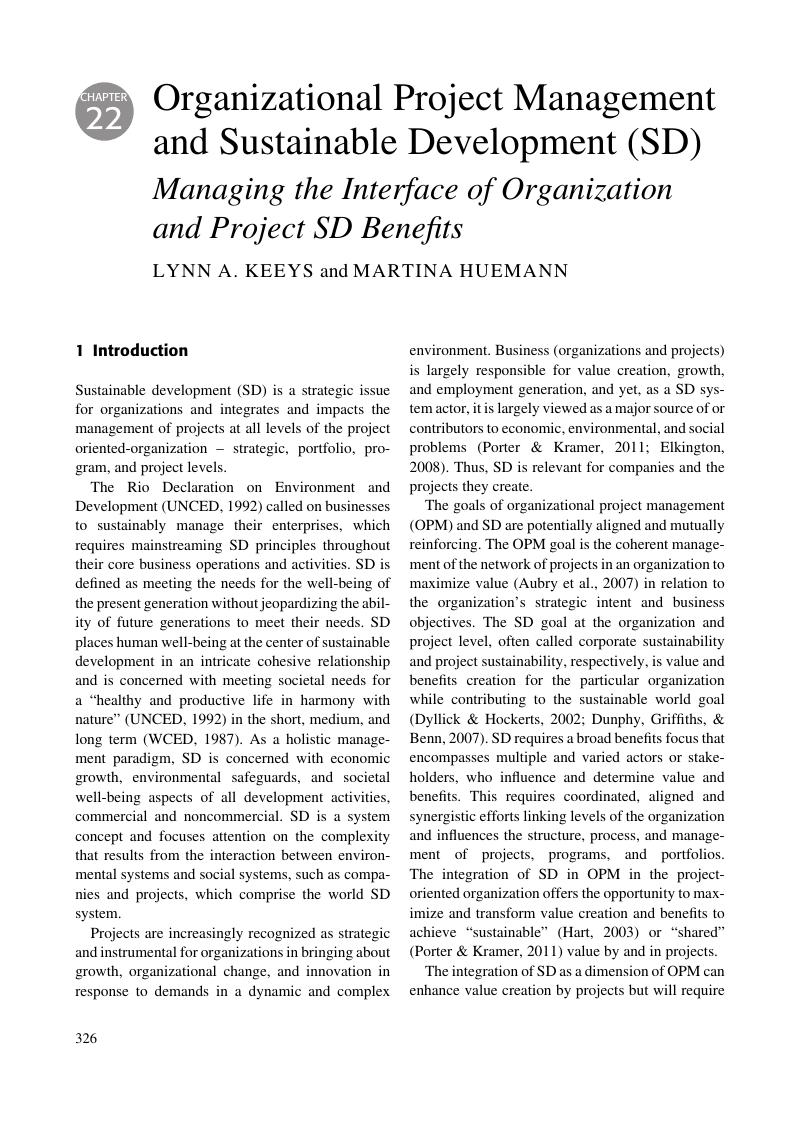Book contents
- Cambridge Handbook of Organizational Project Management
- Cambridge Handbook of Organizational Project Management
- Copyright page
- Contents
- Figures
- Tables
- Contributors
- Foreword
- Introduction
- Part I Strategy
- Part II Organizations
- Part III People
- Part IV New Directions
- Introduction to Part IV
- Chapter 19 Ethics in Projects
- Chapter 20 Multilevel Value Creation in Projects, Programs, and Portfolios
- Chapter 21 An Inherent Complexity
- Chapter 22 Organizational Project Management and Sustainable Development (SD)
- Chapter 23 The Marketing of Organizational Project Management
- Chapter 24 Shared Space for Organizations
- Chapter 25 Social Media and Project Management
- Conclusions
- Index
- References
Chapter 22 - Organizational Project Management and Sustainable Development (SD)
Managing the Interface of Organization and Project SD Benefits
from Part IV - New Directions
Published online by Cambridge University Press: 08 June 2017
- Cambridge Handbook of Organizational Project Management
- Cambridge Handbook of Organizational Project Management
- Copyright page
- Contents
- Figures
- Tables
- Contributors
- Foreword
- Introduction
- Part I Strategy
- Part II Organizations
- Part III People
- Part IV New Directions
- Introduction to Part IV
- Chapter 19 Ethics in Projects
- Chapter 20 Multilevel Value Creation in Projects, Programs, and Portfolios
- Chapter 21 An Inherent Complexity
- Chapter 22 Organizational Project Management and Sustainable Development (SD)
- Chapter 23 The Marketing of Organizational Project Management
- Chapter 24 Shared Space for Organizations
- Chapter 25 Social Media and Project Management
- Conclusions
- Index
- References
Summary

Information
- Type
- Chapter
- Information
- Cambridge Handbook of Organizational Project Management , pp. 326 - 343Publisher: Cambridge University PressPrint publication year: 2017
References
Accessibility standard: Unknown
Why this information is here
This section outlines the accessibility features of this content - including support for screen readers, full keyboard navigation and high-contrast display options. This may not be relevant for you.Accessibility Information
- 3
- Cited by
